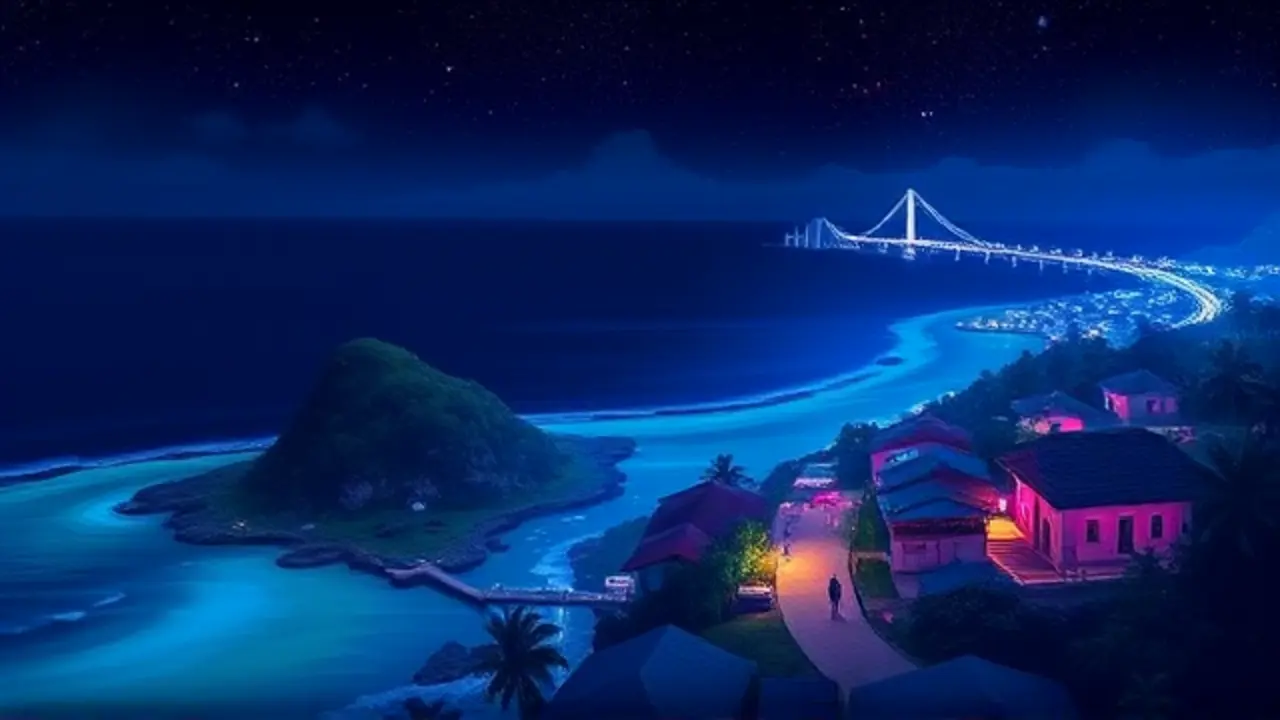Resort Development Aims to Transform Lombok into Miami
From the hills above the quiet coastal village of Buwun Mas on the Indonesian island of Lombok, the view is a fragile, postcard-perfect ecosystem: turquoise waters curl against a rocky islet, coconut groves provide a critical canopy for local wildlife, and children run barefoot along dusty paths that have witnessed generations of tradition. For centuries, life here has been dictated by the rhythms of the land and sea, a delicate balance that now faces an existential threat.On 149 hectares of fertile farmland and pristine coastline, developers are aggressively pushing ahead with Marina Bay City, a planned billion-dollar resort audaciously billed as the 'Miami of Indonesia,' a project that represents not merely construction but a fundamental transformation of the island's very soul. This is not an isolated incident but part of a global pattern of coastal exploitation, where short-term economic gain is prioritized over long-term ecological and social stability, reminiscent of the destructive development seen in parts of Thailand and the Philippines that left local communities displaced and marine environments irreparably damaged.The proposed marina, high-rise condominiums, and luxury shopping complexes will inevitably require massive land reclamation, dredging that will smother coral reefs and seagrass beds vital for fish stocks, and the irreversible consumption of agricultural land that has sustained families for generations. The carbon footprint of such a project, from the embodied energy in concrete and steel to the increased air travel, stands in stark opposition to Indonesia's own climate commitments and the urgent warnings from the IPCC regarding coastal development.Local fishermen, whose ancestors have navigated these waters for centuries, speak of a quiet dread, fearing not just the loss of their livelihood but the erasure of a cultural heritage intrinsically linked to the sea; their voices are often drowned out by the glossy promises of jobs and prosperity, promises that historically fail to materialize for the original inhabitants. When we examine the environmental impact assessments, often rushed and opaque, we must ask the hard questions: where will the fresh water for these resorts come from in a region already facing water stress? How will the waste be managed to prevent the pollution of the very waters that are the project's main selling point? The story of Lombok is a microcosm of a planetary struggle, a choice between a development model that views nature as a resource to be extracted and one that recognizes it as a life-support system to be protected. The fate of Buwun Mas is a test case for whether we have learned from the mistakes of the past or are doomed to repeat them on an ever-grander scale, sacrificing biodiversity and community resilience at the altar of speculative finance and a homogenized, unsustainable vision of luxury.
Latest News
The tragedy that unfolded on Shouson Hill Road this week, where a 34-year-old expatriate mother is suspected of drowning her seven-month-old daughter before
1 day ago0 comments
The news hit with the brutal, unvarnished force that only a tragedy unfolding in a place of presumed safety can deliver—a 16-year-old girl, her life
1 day ago0 comments
The sentencing of Constable Cheng Yuk-wai to six months behind bars for the indecent assault of a 31-year-old woman near Diamond Hill station isn't just a
1 day ago0 comments
In a case that resonates with the enduring tension between individual accountability and systemic responsibility within civic governance, Senior Counsel Alan
1 day ago0 comments
In a chilling case of digital-age predation, a Chinese man was apprehended for the brazen theft of 380,000 yuan, approximately US$53,000, in wedding gift
1 day ago0 comments
The recent trampling of delicate corals in a Hong Kong geopark during the 'golden week' holiday surge represents more than a simple misstep in tourist
1 day ago0 comments
The revelation that Hong Kong police have logged more than 125 reports concerning fraudulent academic qualifications at the city's universities in just the
1 day ago0 comments
The disappearance of a 34-year-old South Korean man in Cambodia, identified only by his surname Yang, has sent shockwaves through international diplomatic
1 day ago0 comments
It’s quiet here...Start the conversation by leaving the first comment.
